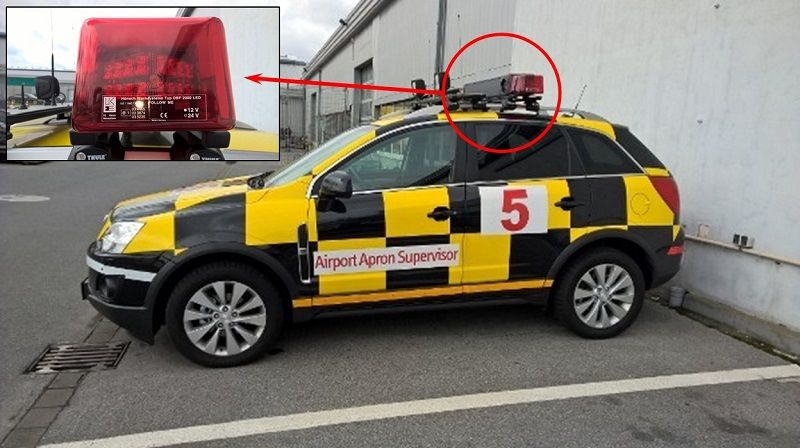Further investigation of signal lamps on behalf of ADV
November 2018 | Certification
With the adoption of Regulation (EU) 139/2014 (Implementing Rule) based on Regulation (EC) 216/2008 (Basic Regulation) by the European Commission, common standards for the planning, operation and maintenance of safe airports are now envisaged, which must be implemented by all member states. On this basis, EASA’s guideline Certification Specifications (CS) and Guidance Material (GM) for Aerodromes Design (CS-ADR-DSN) contains requirements for the design of the airport infrastructure. This includes detailed specifications for the use and design of obstacle lights, and specifically also the marking of mobile objects (e.g. lead and follow me vehicles, rescue and emergency vehicles, etc.) with signal lamps (rotating beacons, flashing beacons, etc.). These must satisfy specific properties, e.g. with regard to peak intensities, colouring, beam angles and flash rates. In the course of the EASA certification of the German airports, it was found that the signal lamps meet the generally applicable European basic requirements for vehicle lighting according to ECE-R65, but that these differ from EASA-compliant signal lamps in terms of the above-mentioned properties.
In 2016, GfL already carried out analyses concerning this matter on behalf of the ADV (see news entry October 2016). Now, on the order of ADV, extensive further investigations are to be carried out focusing solely on the properties of signal lamps. The initial focus is on the photometric measurement of a representative selection of luminaire types from different manufacturers currently used at German airports in a lighting laboratory equipped for this purpose. If significant differences to the EASA luminaire properties are identified, a safety assessment is subsequently carried out. It will then determine whether detected differences in lighting behaviour are relevant for flight safety or whether there is an Equivalent Level of Safety (ELOS). First results will be expected in February 2019.

